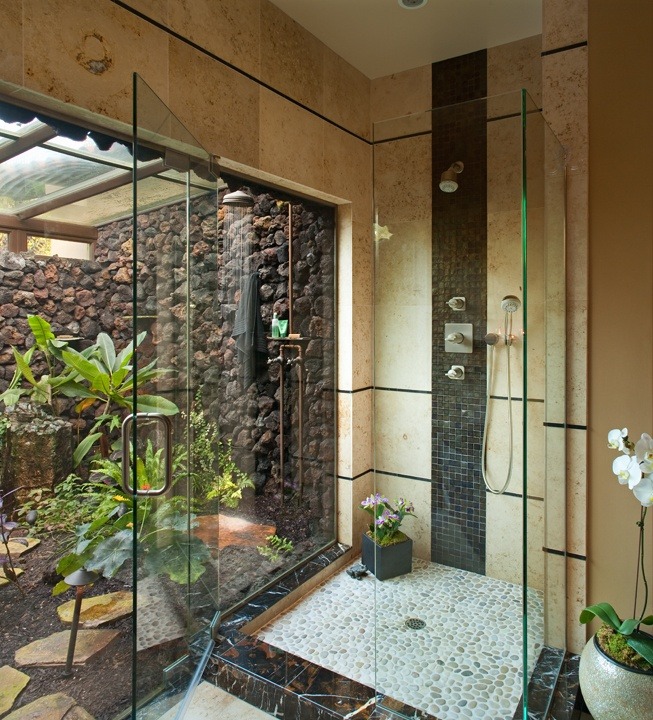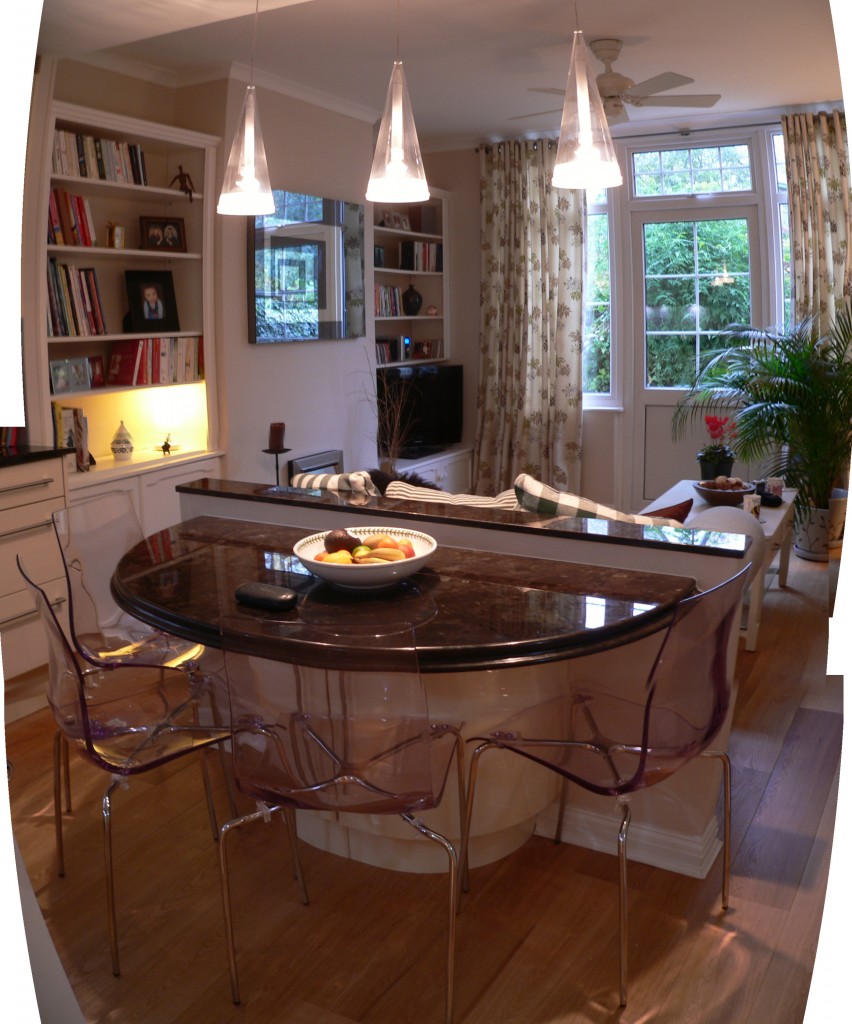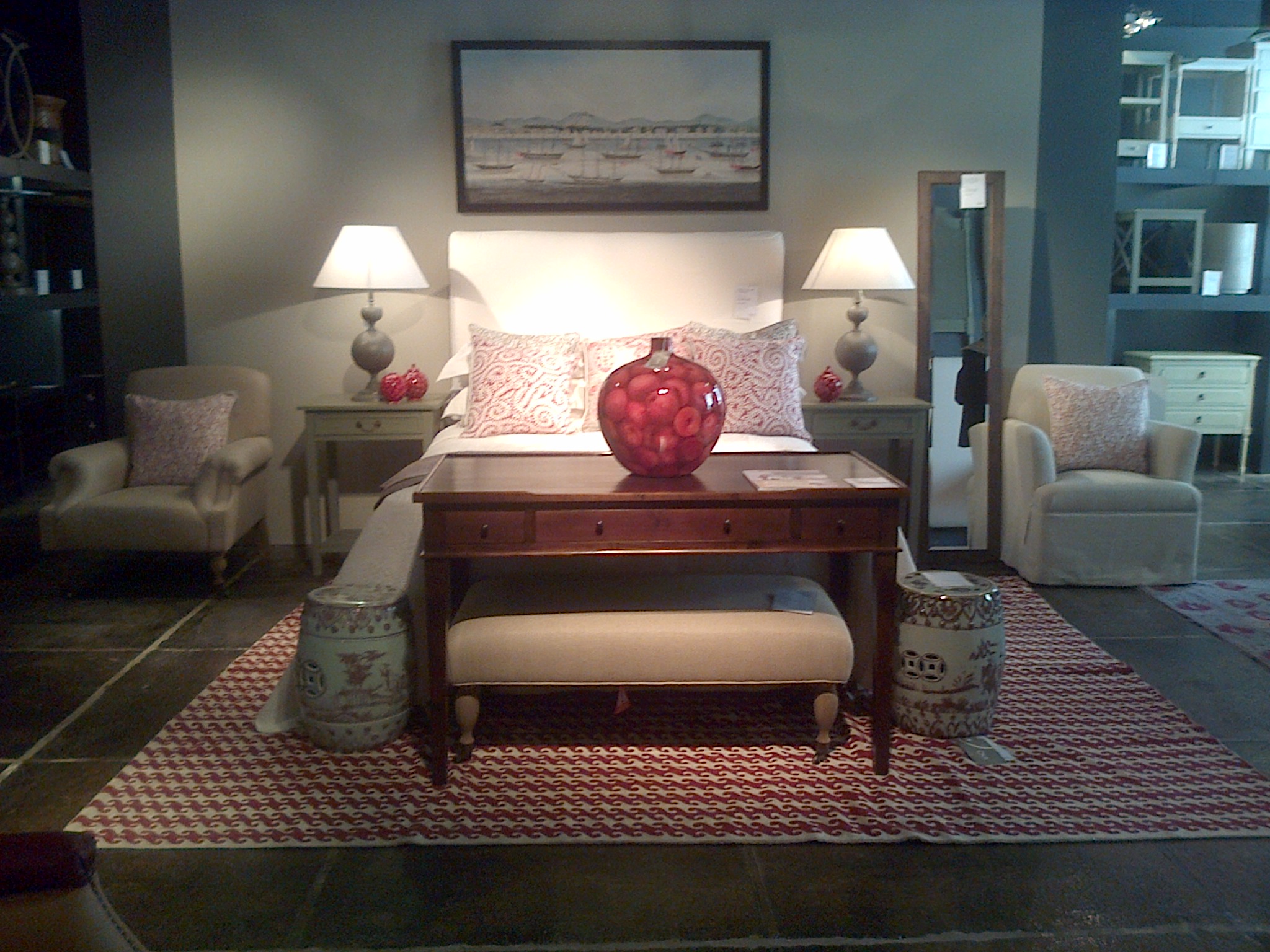
5 Differences between Asian and Western bathroom design concepts

I am working on a very interesting live-work unit space with the working areas in the front of the building and the living space at the rear. It has to be a flexible, informal area because there might be guests or collaborative colleagues, and there might be entertaining. At the same time, when there are no disruptions, events or appointments, it has to be a calm, peaceful space with storage, room for creativity and relaxation for one to two workers. This is an ideal project for me to try out innovative ideas because the client is a creative professional and partly Chinese and therefore open to modern concepts of the living space. In London, I find cosmopolitan city-dwellers welcome these ideas due to lack of space. One of the key features of this live-work space will be the bathroom. How are Asian and Western concepts of bathroom design different?
1. Strong connection between indoor and outdoors. Asian bathrooms are linked to the outdoor space, often with an external door which you could open to let it dry out and ventilate naturally, whereas Western bathrooms tend to be internalised, or “another” room.
2. Natural light and ventilation is important in Asian design. Privacy is achieved by orientating the room correctly rather than putting in blinds, and sliding screens.
3. Emphasis on practical and simple design. Not on luxury. A traditional Asian bathroom will not be using luxury or expensive materials. Instead, natural, utilitarian and cheap materials are common such as wood and stone.
4. Emphasis on space-saving design. If you have ever visited Hong Kong or Tokyo you will realise there is no room too small to be a bathroom! Asians are used to very tiny bathrooms as they are still seen as utilitarian, minimal spaces in order to maximise other rooms.
5. Common to have deep soak sunken baths. Achieving two-fold advantage, firstly you can go deep without length, again to save space, and secondly, it increases verticality in the room to make it look bigger and to let more light in. Western baths are long and narrow in order for the user to lie down, whereas the Asian user will want to sit up. If you watch Studio Ghibli’s animated movie Spirited Away (2001), you can see inside a traditional Japanese bathing house. Obviously that’s run by ghosts. Which we are not.
If you enjoyed this article, please share. As usual I would love to hear from you. All comment and feedback welcome.
Written by Ivy Ngeow B.Arch (Hons) MA RIBA © 2019 All rights reserved
Tweet me @ivyngeow
#womeninarchitecture #thepracticeblog #ivyngeow





